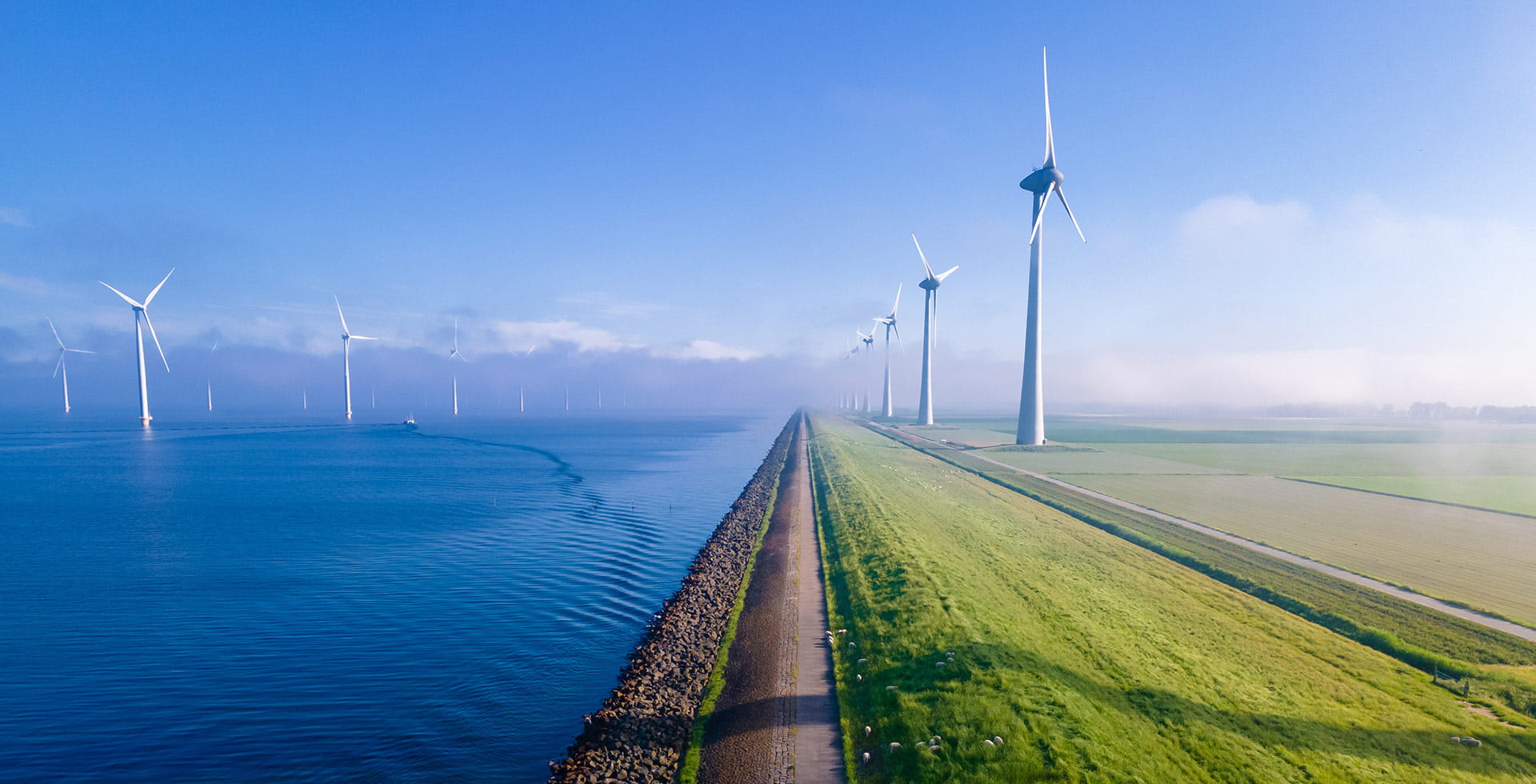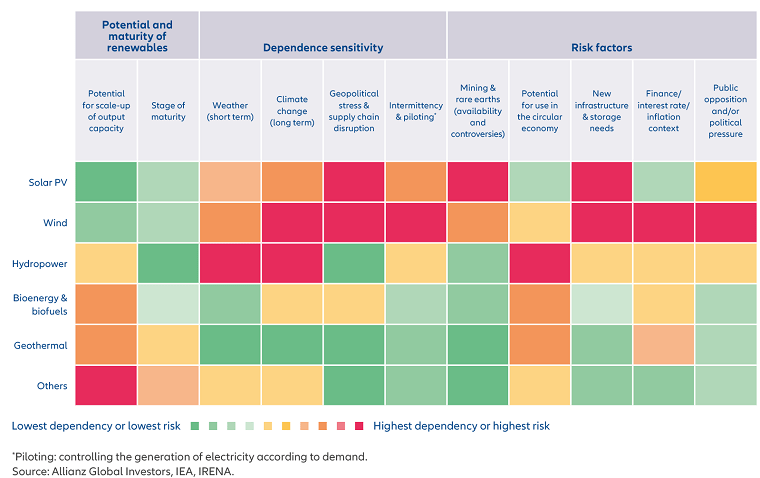Climate | ~ 7 min read
Where’s the biggest opportunity in renewable energy?

Renewable energy capacity surged in 2022, but not all sources of renewable power represent the same level of opportunity for investors. Our heatmap shows the potential risks and opportunities across the renewables spectrum.
Shaping the future renewables mix
What does the current renewables mix look like? Hydro power – which uses the natural flow of water to create energy – is the leading source of renewable power globally. But IEA numbers indicate that solar photovoltaic (PV) and wind energy will overtake hydro to become the dominant sources of renewable power globally by 2030. 1
Both solar and wind are relatively mature and ready to scale, and investors may look in their direction for growth opportunities.
However, exploring the future trajectory – and opportunities and risks – of each source of energy is critical. This is illustrated in our heatmap below where we have mapped renewables by their maturity – and potential for growth – versus their key dependencies and risk factors.
For example, geothermal energy may appear at first glance to be a less attractive investment opportunity, being at the lower end of the spectrum in terms of scale-up potential and maturity. But consider its dependencies and risks: it is less likely than solar and wind to be impacted by the weather, climate change and geopolitics.
By assessing the range of renewable energy sources in this way, we aim to provide investors with a more holistic understanding of the implications of their portfolio exposures.
Chart: Potential and maturity of renewable energy sources versus their key risks and dependencies

Where should investors look for opportunities in renewable energy?
Being able to evaluate different sources of renewable energy in this way is important because much is resting on increased investment from both public and private markets. Urgent action is needed to accelerate progress towards cleaner energy, but the gap between current and required investment is significant. How to plug the gap? We believe the answer lies in considering the different ways to support the depth and breadth of investment needed, including by:
- Financing renewable energy through direct investment in projects in the private markets, or through investment in companies looking to significantly expand their renewable energy infrastructure.
- Investing in supporting infrastructure through both private and public markets to indirectly drive the expansion of renewable energy. This includes private equity investment which is playing a key role in renewables infrastructure.
- Considering opportunities among energy enablers (not just the energy providers) including mass storage solutions for solar and wind energy, grid adaptation and the sourcing of critical minerals and metals.
With renewables set to dominate the total energy mix in the coming decades, evaluating the opportunities – and understanding how capital can be directed to them – should be a priority for investors.
You can find out more about the future of renewables in our recent research article: Renewable energy: the 2050 remix
Other recent articles on the energy transition include:
Supercharging clean energy storage capacities
Investing in the energy transition: need to know guide






